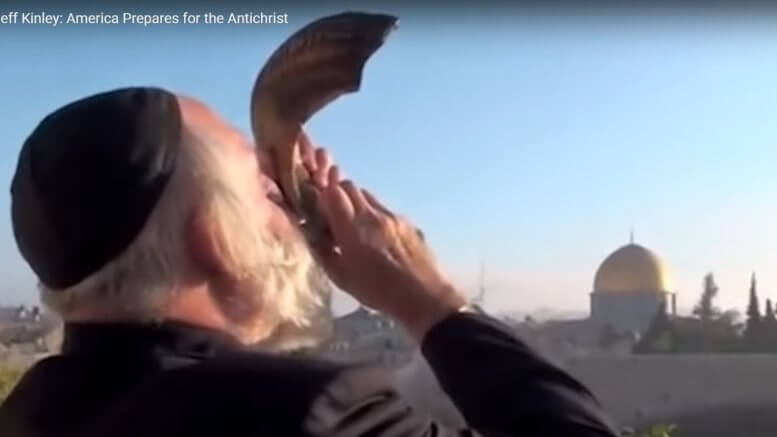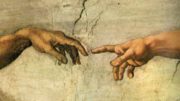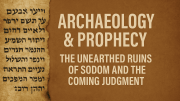What is the significance of the red heifers? Find out with guest Mondo Gonzales along with hosts Tim Moore and Nathan Jones of the Lamb & Lion Ministries evangelism team as they provide their Prophetic Perspectives (289).
Prophetic circles are abuzz about the significance of the red heifer mentioned in Numbers 19. The excitement centers on the fact that five solid red heifers were bred in America and flown to Israel in late 2022. They will be examined when they are two years and a day old. If one of them is found to be suitable, it would be sacrificed.
Rabbinical tradition (think Tevye from Fiddler on the Roof) holds that once a red heifer is killed and its ashes collected, the priesthood can be restored, and the third temple can be built. Since cows are very much a part of the created order, it is appropriate to consider this as a natural “sign.”
A Moooving Experience
Many Christians who have visited Israel know that the Temple Institute has been planning and preparing to rebuild the temple for some time. It already has various implements that will be used in a rebuilt temple. You can see the beautiful menorah crafted for that purpose in Quarter Square in the Old City of Jerusalem—funded by a Ukrainian Jew and estimated to be worth millions of dollars.
In Numbers 19, the Lord told Moses and Aaron to sacrifice an unblemished red heifer (a young female cow that has never been pregnant, yoked, or milked) as an ordinance of purification.
Zealous Jews who long for the temple to be rebuilt want to fulfill the “lasting ordinance” of the red heifer in the Old Testament—which initially involves a humble cow. Some of them are motivated by sincere religious zeal, while others merely want to reclaim the location that is central to Jewish identity and national pride—much like the zealots of Jesus’ time.
The prophetic buzz focuses on the hope that these red heifers might be a sign that Israel is on the cusp of rebuilding its temple.
The Temple, The Temple, The Temple
Christians recognize that the temple will in fact be rebuilt—after the Jews sign a peace treaty with the Antichrist. That temple will become the center of Jewish national and religious identity for 3½ years, even though their initial impetus will not be to worship Jesus as the Messiah. Jews who believe in Jesus right now will be raptured, while others will place their faith in Him during the Tribulation. We know that 144,000 Jewish witnesses—or evangelists— will proclaim the Gospel during that horrific period.
Some Christians eagerly support the goal of rebuilding the temple. For instance, the farmer who bred the five red heifers in Texas is a Christian motivated to help the Jewish people prepare to rebuild their temple as prophesied. Still, we long for and worship a Person, not a place. With that in mind, perhaps we can gain perspective on the third temple if we consider the first two.
King David was inspired to build God a temple to replace the tent where the Ark of the Covenant dwelled. Nathan initially affirmed that inclination, but then returned with a word from God. The LORD asked rhetorically, “…did I speak a word with one of the tribes of Israel, which I commanded to shepherd My people Israel, saying, ‘Why have you not built Me a house of cedar?’” (2 Samuel 7:7, repeated in 1 Chronicles 17:6) His clear insinuation was that He had not demanded a temple of wood and stone, but rather hearts that were fully devoted to Him.
Samuel established this same truth when he said, “Has the LORD as much delight in burnt sacrifices as in obeying the voice of the LORD? Behold, to obey is better than sacrifice, and to heed than the fat of rams” (1 Samuel 15:22).
Still, God did honor David’s desire to build for Him a temple—although He did not allow David himself to build it. Solomon built the first temple. Later, God took offense when the exiles who returned from Babylon neglected the building of the second temple— not because He lacked for a dwelling, but because their attitude reflected hearts that were far from Him.
The second temple was eventually completed and later made larger and grander by the great builder, Herod. In terms of official endorsement, however, Jesus did not heap praise on the structure of the temple itself or endorse Herod’s work. Instead, He honored its intended purpose as a “house of prayer” (Matthew 21:13). Recalling the full text of Isaiah’s prophecy, Jesus cited God’s promise: “Even [foreigners] I will bring to My holy mountain and make them joyful in My house of prayer. Their burnt offerings and their sacrifices will be acceptable on My altar; for My house will be called a house of prayer for all the peoples” (Isaiah 56:7).
So, regarding the temple, God’s official endorsement or gracious acceptance depends entirely on the motive of the people doing the building and the sacrificing. If they seek to please and serve the LORD, then their inclination to worship God will be honored as David’s was—and the Holy Spirit will draw them to believing faith in the Lord Jesus Christ. The same could be inferred about the role of a red heifer. Anyone who thinks that a building or a cow will be sufficient to appease our holy God apart from the Gospel is as deceived as those who cried out, “the temple of the LORD, the temple of the LORD, the temple of the LORD” in Jeremiah’s day (Jeremiah 7:4).
The God of Talking Donkeys & Red Cows
God has incorporated humble animals to fulfill His purpose throughout human history. He made garments of skin to cover Adam and Eve’s nakedness (Genesis 3:21), opened the mouth of a donkey carrying a pagan prophet (Numbers 22:27-30), appointed a great fish and a lowly worm to teach Jonah eternal lessons (Jonah 1:17 and 4:7), and granted the foal of a donkey the honor of bearing Jesus into Jerusalem (Matthew 21:2-6). He will return to earth mounted on a white horse (Revelation 20:11). And soon, a cow will once again play a mysterious role in the protocols ordained by God.
In the end, we know that a red heifer will be sacrificed and the third temple will be built. In the fulness of time, those pre-seen historic events will give way to a time of Great Tribulation for the Jewish people. Only when they have come to the end of themselves will they cry out, Baruch Haba B’shem Adonai—“Blessed is He Who comes in the Name of the LORD!” Then Jesus Christ will return to earth in glory and power, ascend the mountain of the LORD, and reign from the throne of David.
…And The Lamb & Lion
While preparations for the third temple may be underway, I believe it will not actually be constructed until after the Church is removed from the world at the Rapture and the Antichrist is revealed. And, although the red heifer is significant for what it portends, the third temple will not secure forgiveness of sins through a reconstituted sacrificial system. As Hebrews 10:4 recognizes, “…it is impossible for the blood of bulls and goats to take away sins.” But we know that God’s prophetic Word will be fulfilled, and that in the end the Jews will look upon the perfect Sacrifice and weep over Him like the bitter weeping over a firstborn (Zechariah 12:10).
There is no question that God works in ways far beyond our comprehension and that He inspires individual Christians to serve Him faithfully. Some will support Jewish efforts to fulfill the prophecies outlined in Scripture. That was true a century ago when Christian Zionists avidly supported the Jewish effort to return to the Promised Land and reestablish a home and a nation. Christians do not believe Israel represents a separate means of salvation apart from our Jewish Messiah, but we take seriously God’s admonition to bless His chosen people.
So, while I am fascinated by all the prophetic events that are swirling around us today and converging as never before—including news of a red heifer—I am not fixated on any of them individually. Instead, I am watching and waiting—and listening for “a shout, with the voice of the archangel and with the trumpet of God,” knowing that soon and very soon our Blessed Hope is coming for His Bride.
That joy-filled expectation leads to my appreciation for the Lamb and the Lion—two metaphorical references to our great God and Savior, Jesus Christ.





